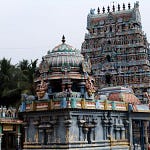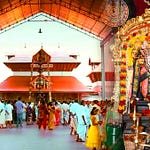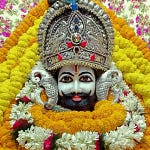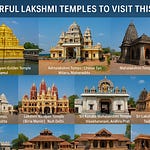📍 Location: Durgakund, Varanasi, Uttar Pradesh
🔱 Deity: Goddess Durga
🛕 Significance: One of the most revered Shakti temples in India
Varanasi, the eternal city, is known for its deep-rooted spirituality, mystic aura, and sacred temples. Among the many jewels of this ancient city lies Durgakund Temple, a vibrant and powerful shrine dedicated to Maa Durga, the divine mother and symbol of shakti (power). Located near the famous Banaras Hindu University (BHU), Durgakund is not just a religious site but also a cultural landmark that pulsates with spiritual energy.
🕉️ Origin & Mythological Story
The Durgakund Temple traces its roots to ancient times and is deeply woven into Hindu mythology.
🔱 Legend & Belief:
It is believed that Maa Durga herself manifested at this site to protect the city from demons and evil forces. According to local lore, the idol of the goddess housed in the temple was not man-made but appeared on its own — a swayambhu murti. The pond (kund) adjacent to the temple is said to have been created when the goddess struck the earth with her trident to create a holy water body.
Many scriptures refer to this location as a powerful Shaktipeeth, though it is not officially listed among the 51 Shaktipeethas. The temple and kund are considered highly auspicious, especially for unmarried girls, women seeking blessings for family well-being, and devotees wishing to eliminate negative energies from their lives.
🛕 History and Architecture
The present-day Durgakund Temple was built in the 18th century by a Bengali Maharani – often associated with Rani Bhabani of Natore, a devout patron of Hindu temples across India.
🏛️ Architecture:
The temple follows the Nagara style of North Indian temple architecture.
It is constructed in red sandstone, reflecting the fiery nature of Goddess Durga.
The Shikhar (spire) of the temple rises boldly with intricate carvings and features motifs of lions — the vahana (vehicle) of Durga.
The kund (pond) adjacent to the temple was once connected to the Ganga and played a significant role in ritual practices.
🙏 Religious Essence and Significance
Durgakund is considered a seat of Shakti (divine feminine power). The goddess here is worshipped as a warrior, a protector, a mother, and a destroyer of evil. Her fierce form inspires courage, while her nurturing side gives strength to families and individuals.
💫 Importance:
A powerful site for Navratri celebrations, attracting lakhs of devotees.
Known for tantric rituals and Durga Saptashati recitations.
One of the most visited temples by local women for health, fertility, and protection rituals.
🪔 Puja, Rituals, and Aarti
Worship at Durgakund follows traditional Shakta rituals.
🧘♀️ Daily Rituals:
Mangala Aarti (morning): Begins around 4:30–5:00 AM, accompanied by the beating of drums and chanting of Durga Stotra.
Shringar & Bhog Puja: The idol is beautifully decorated in red and gold sarees, and prasad of fruits, sweets, and flowers is offered.
Evening Aarti (Sandhya Aarti): Around 7:00 PM, the temple is lit up with diyas and devotees chant “Jai Mata Di”.
🌺 Special Rituals:
Kumari Puja during Navratri (worship of young girls as embodiments of Durga).
Sindoor Khela (vermillion play) on the last day of Durga Puja.
Special offerings on Tuesdays and Fridays – considered auspicious for Devi worship.
🕗 Timings
Temple Opening: 4:30 AM
Mangala Aarti: 5:00 AM
Bhog Offering: 12:00 PM
Sandhya Aarti: 7:00 PM
Temple Closes: 9:30 PM
🧭 How to Reach Durgakund Temple
🚗 By Road:
Well-connected by local auto, taxis, and e-rickshaws from any part of Varanasi.
Located around 1.5 km from BHU, and 6 km from Varanasi Cantt Railway Station.
✈️ By Air:
Nearest Airport: Lal Bahadur Shastri Airport (Babatpur) – ~25 km away.
Prepaid cabs or Ola/Uber available.
🚂 By Train:
Varanasi Junction (BSB) and Manduadih (MUV) are the nearest major stations.
🧳 Travel Tips
Best time to visit: October to March, especially during Navratri.
Wear traditional Indian clothes while visiting the temple.
Carry your offerings (prasad, sindoor, flowers) from local vendors outside the temple.
Photography may be restricted inside the sanctum – seek permission.
The area around the temple also offers many street food joints, especially during festivals.
🌟 Nearby Attractions
Tulsi Manas Mandir – just beside Durgakund, where Goswami Tulsidas wrote the Ramcharitmanas.
Sankat Mochan Hanuman Mandir – 500 meters away.
Assi Ghat – Around 1.5 km from Durgakund, great for Ganga Aarti and sunrise views.
Kashi Vishwanath Temple – 6 km, the most revered Shiva temple in India.
📜 Spiritual Takeaway
Durgakund Temple is not just a shrine; it is a living symbol of feminine power, divine protection, and spiritual strength. Its energy draws seekers, believers, and travelers alike who come to seek blessings, strength, and inner peace.
For the spiritually inclined, a visit to Durgakund is a soul-stirring experience. Whether you're praying for courage, clarity, or calm — Maa Durga’s grace is believed to manifest quickly here.
📣
From its mystical origins to its vibrant festivals and unshakable devotion, Durgakund Temple stands tall as one of the most important cultural and religious landmarks of Varanasi. It embodies strength, beauty, and devotion — making it a must-visit for anyone seeking the blessings of the divine feminine in her fiercest and most protective form.










